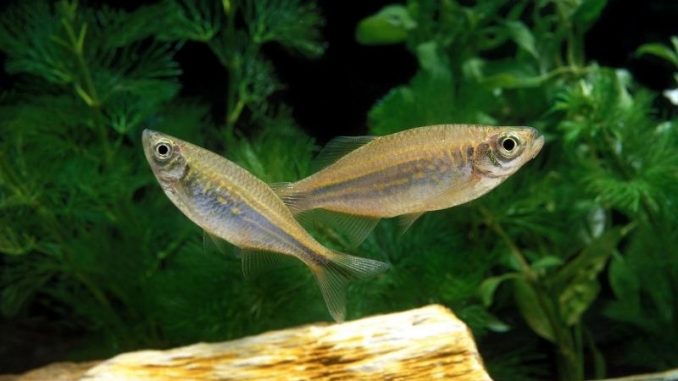
The danio genus refers to 27 varieties of danios in the family Cyprinidae. Native to Southeast Asia, danios are active freshwater fish.
Danios come in striking colors and patterns and have low care needs, making the fish a popular choice for beginner aquarists.
TABLE OF CONTENTS
Danio Facts & Overview
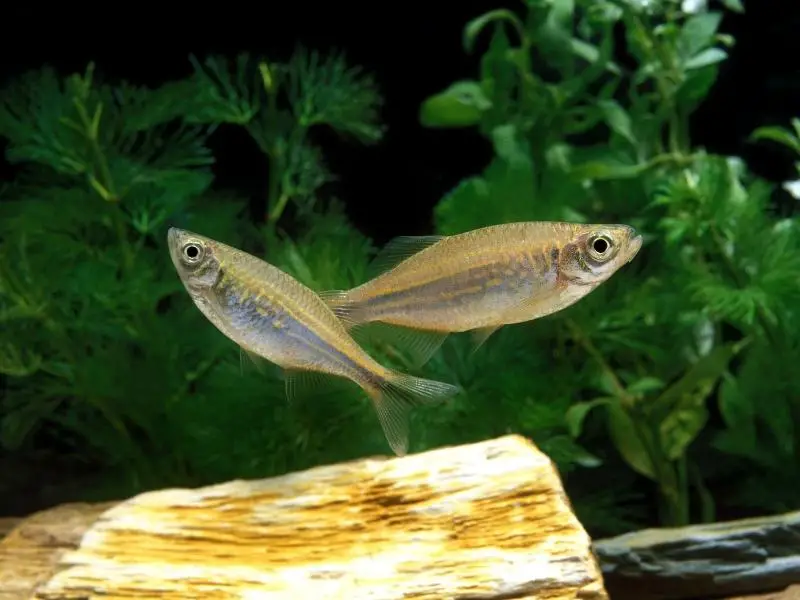
| Scientific family: | Cyprinidae |
| Common names | Danio |
| Distribution: | Southeast Asia |
| Size: | Up to 2.5 inches for most danios; up to 6 inches for giant danios |
| Life expectancy: | 3–7 years |
| Color: | Various, including green, pink, yellow, blue, black, red, purple, and orange, with colored spots and stripes |
| Diet: | Omnivore |
| Temperament: | Peaceful |
| Minimum tank size: | 10 gallons for most danios; 55 gallons for giant danios |
| Temperature: | 64–79°F |
| pH: | 6.0–8.0 pH |
| Hardness: | 5–19 dGH |
| Care level: | Easy |
| Breeding: | Egg-scatterer |
Origin & Distribution
The name “danio” was coined by Francis Hamilton in the early 19th century. This name comes from the Bangla name dhani, which means “of the rice field.” In 1916, the danio genus was split into two, but the two genera were re-combined in 1991.
Danios in the wild live in quiet pools and fast-flowing streams in South and Southeast Asia.
Types of Danios & Appearance
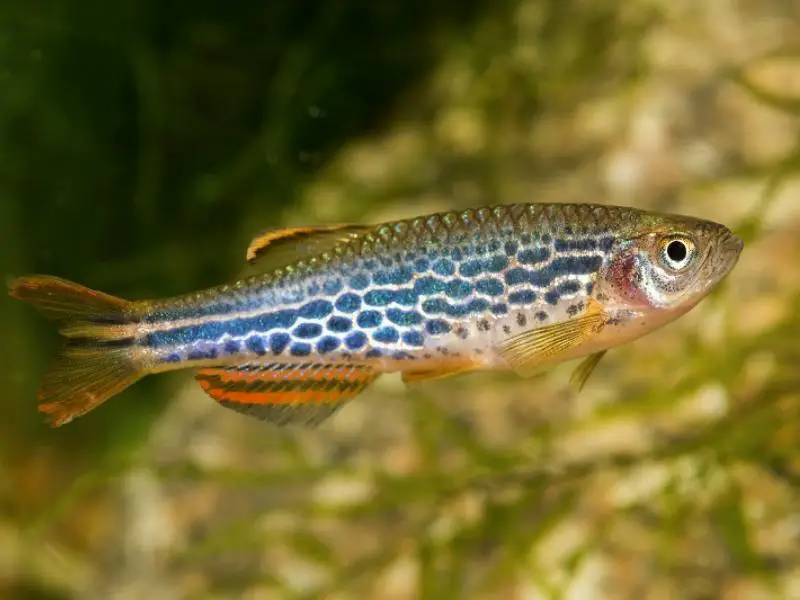
There are 27 distinct species of danio today. The most popular types of danios are:
Zebra Danios
Zebra danios have a silvery-gold coloration with blue striped markings running lengthwise from the gills to the tail. These fish grow up to two inches. They’re hardy fish that can withstand a variety of water conditions and temperatures. Zebra danios are loyal to their breeding partners and mate for life.
Giant Danios
Giant danios are energetic, peaceful fish with friendly personalities. They have iridescent gold bodies with steel-colored stripes and spots. These giant danios grow up to 4 inches in captivity and 6 inches in the wild.
Celestial Pearl Danios
Celestial pearl danios have blue bodies patterned with white spots, and red or orange fins. These fish grow up to 1 inch from head to tail. Celestial pearl danios are peaceful but timid. They are plant-reliant fish that get on well with other fish of a similar size and temperament.
More Types of Danios
Although some danios species are more popular than others, there are plenty of other interesting varieties:
- Longfin leopard danios: A spotted version of the zebra danio, with silver bodies patterned with pale blue spots. Grow up to 2 1/4 inches in an aquarium. Active and peaceful fish that enjoy a strong current and do best in schools of six or more.
- Gold ring danios: Silver-gold bodies with black spots spanning from the gills to the tail. Adult fish reach 2 inches in size. Peaceful fish that do well in a well-furnished community tank. A schooling species by nature.
- Glowlight danios: More colorful than most fish in the danio family, with red, green, orange, silver, blue, yellow, black, and gold coloring. Grow up to 1.2 inches in length. Peaceful fish that get nervous around large tank mates. Best paired with other danios.
- Panther danios: Torpedo-shaped bodies that display a range of colors when illuminated with light. Grow to a maximum size of 1.7 inches. Hardy, peaceful schooling fish that should be kept in groups of eight or more.
- Black-barred danios: Greyish-brown bodies with black vertical bars across the abdominal side. Females have transparent fins, while males have an orange hue to the caudal fin. Reach 3 inches in length. Active, social fish that do best in groups of 10 or more.
- Blue danios: Silvery-blue with a turquoise hue and horizontal black lines from the gills to the tail. Grow up to 1.7 inches as adults. Schooling fish that do well in a peaceful community tank with at least 6 other blue danios. Prefer moderately strong currents and well-oxygenated water.
Danio Behavior & Compatibility
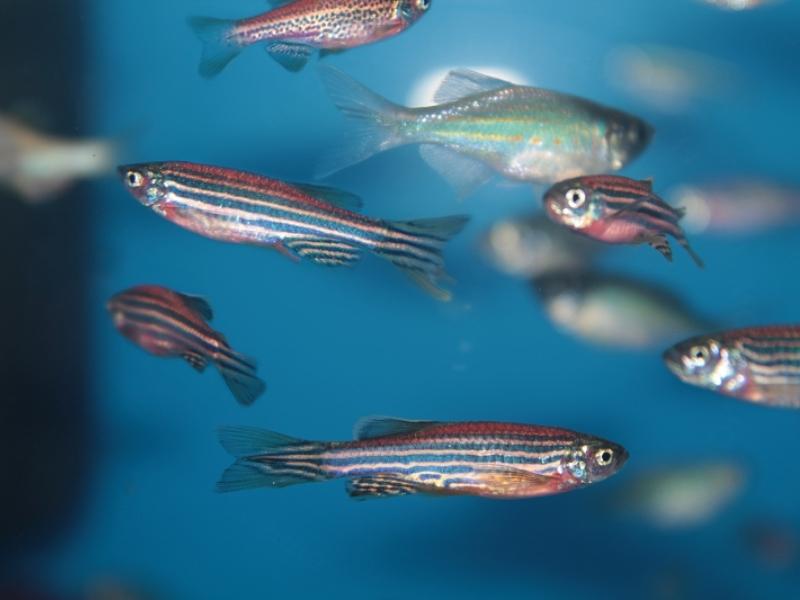
Danios are social fish that exhibit shoaling behavior. Many danio shoals have hierarchical systems. The most dominant fish in the shoal establish their leadership through playful behaviors.
In an under-populated or over-cramped tank, danios are known to show more aggressive behaviors than usual, such as chasing and nipping the fins of their less dominant peers. This can be avoided by buying the right number of danios and placing the fish in the right-sized tank.
Danios are peaceful, but the fish show signs of aggression to slow-moving, long-finned fish. Don’t house danios with slow-moving fish to prevent fin-nipping.
Housing danios alone can stress the fish and lead to lethargy and illness. Keeping danios in shoals of around six to twelve will prevent this issue. Danios become hyperactive in large shoals, so don’t buy too many danios for your aquarium.
Danios occupy the top, middle, and bottom sections of the aquarium, but these fish predominantly reside in the middle to upper layers.
Tank Mates
Before you consider housing danios with any other fish species, make sure you have enough danios in your shoal. Danios become stressed when kept on their own, and you should house these fish in groups of at least five (one male to four females).
Danios school with their own species. For instance, in the wild, zebra danios will swim with celestial pearl danios if there aren’t enough fish of their kind to shoal with.
Danios are compatible with other types of danios, so consider adding different danio species to your tank before you look for other fish.
Some of the other fish that can be housed with danios are:
- Honey gouramis — Inexperienced fishkeepers should consider adding honey gouramis to their community tank. Honey gouramis are peaceful, shy fish that are easy to care for and can be kept in pairs or groups. Although honey gouramis aren’t schooling fish, these fish enjoy one another’s company.
- Scarlet badis —A popular breed of nano fish is the scarlet badis. This freshwater fish is tiny, and the males grow to no larger than eight-tenths of an inch. Full-sized females reach half an inch in length. Scarlet badis are peaceful fish that hide in plants and avoid big fish.
- Ember tetras — Sometimes known as fire tetras, ember tetras are eye-catching fish that aren’t easily scared. These active, playful fish usually swim in the mid-section of the tank. Ember tetras are shoaling fish and exhibit peaceful, cautious behavior.
- Rosy barbs — Active fish with bright colors and peaceful temperaments, rosy barbs are one of the larger members of the barb species. These fish make great community fish, but, like danios, rosy barbs have a tendency for fin-nipping and shouldn’t be housed with slow-moving, long-finned fish.
- Rummy nose tetras —Three similar fish species are classed as rummy nose tetras, but the true rummy nose tetra is the Hemigrammus rhodostomus. Rummy nose tetras are peaceful shoaling fish that enjoy having plenty of swimming space.
- Corydoras — These small, tropical freshwater catfish are peaceful schooling fish that do well in groups of 6 or more. Corydoras are shy fish that scavenge for food at the bottom of the tank and prefer stable water parameters.
- Dojo loaches — Also known as pond loaches or weather loaches, dojo loaches are bottom-dwelling tank cleaners that spend most of their waking hours eating algae. Hardy and peaceful, dojo loaches do best when housed in small groups.
- Aquatic invertebrates —Snail species, like zebra snails, are peaceful tankmates for danios, and help to keep the tank clean. Freshwater shrimp, like the blue velvet shrimp, are other compatible aquatic invertebrates. You can also house danios with frogs, such as the African dwarf frog.
There are several fish that shouldn’t be housed with danios, including long-finned, slow-moving fish, like elephant ear guppies and sailfin molly fish. Danios will nip the fins of these fish. Predatory fish like redtail catfish shouldn’t be housed with danios, as these fish are known to view danios as food.
Male vs Female Danios
Female danios are larger and rounder than males, especially during breeding season, when the female’s belly balloons with eggs. Male danios are more active than females and are more likely to show dominance in the tank. Males are also more streamlined than females.
Because male danios are more dominant than females, males are more likely to show aggressive behavior in the aquarium. To avoid issues with aggression, don’t include more males than females in your tank. One male for every four females is the best ratio.
The differences in pattern and color between male and female danios depend on the species of danio. Typically, males and females have identical patterning, but males are darker in color than females.
Danio Tank Setup
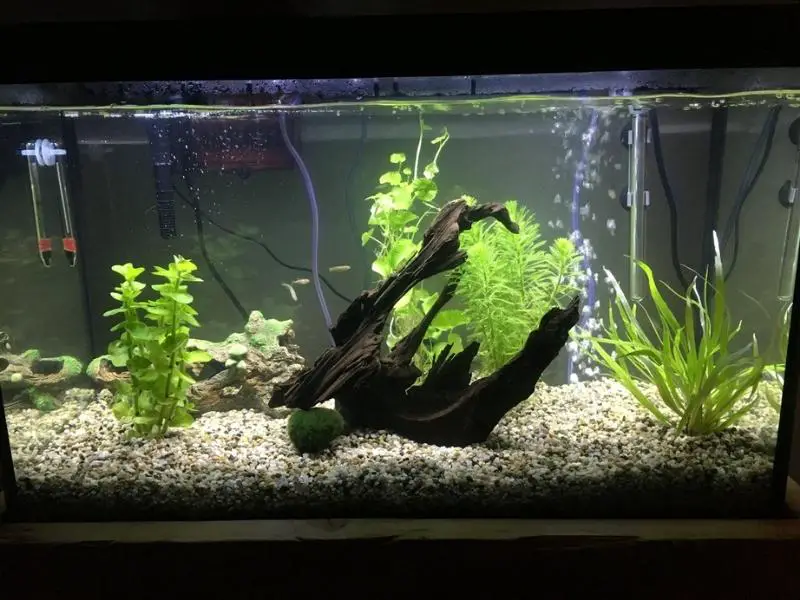
Replicating a danio’s natural environment in an aquarium is easy. Although danios have their preferred water parameters, most danios can withstand a variety of water conditions and temperatures.
Tank Size
A shoal of six to twelve danios requires a tank size of at least 10 gallons. If you plan to add other community fish to your aquarium, a 15-gallon tank is best.
Danios become aggressive if housed in an overcrowded or undercrowded tank, so the tank should be the right size for the number of fish you have. Giant danios need more space to swim and require a tank size of at least 55 gallons.
Water Temperature, Hardness, & pH
The ideal water temperature for danios is 64–79°F, depending on the danio species in the tank. Danios prefer a neutral pH of 6.0–8.0. Maintaining water hardness at a soft to medium level is necessary. Keeping water conditions stable will prevent disease and stress.
You should buy a good filtration system for the tank to remove chemicals and retain optimal conditions. The type of filter you need depends on the size of the tank and the number of fish in the aquarium.
Substrate & Decoration
Danios aren’t bottom-dwelling fish, so you don’t need to find a substrate that these fish can burrow in. However, using fine, soft sediment as a substrate will closely replicate the danio’s natural habitat. Make sure to thoroughly wash any substrate before you add it to the aquarium, to prevent water cloudiness.
Smooth stones and gravel can be used to create a hillstream environment for your danios. Add pieces of bogwood to represent underwater tree roots.
Freshwater plants like Amazon sword and Java fern give danios a hiding place and provide high concentrations of dissolved oxygen. Adding plants to the aquarium also increases habitat complexity, which reduces aggressive behavior in the tank.
Danio Care
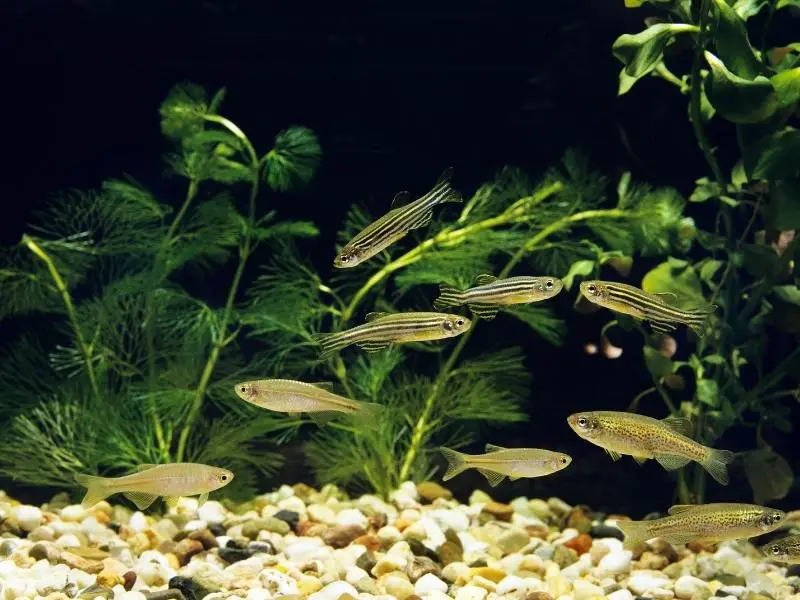
Danios are easy to care for, but you should closely watch the behavior of these fish from the moment you introduce the species to your tank. Male danios spend a lot of time courting females, which can lead to fights amongst males. Adding females and males to the tank to a 4:1 ratio will reduce fights.
Although danios are hardy fish, there are certain aquarium diseases that these fish are prone to.
Diet & Feeding
Danios eat plants, algae, zooplankton, worms, and small invertebrates in the wild. As opportunistic features, danios eat whatever they can find. This means that the diet of danios in captivity needs to be varied.
Feed your danios dry food like pellets and flakes that are small enough to fit in the fish’s mouth. Use sinking pellets for danios that stray toward the bottom of the tank, like celestial pearl danios.
Brine shrimp, white worms, and krill are good, nutritious live or frozen foods to feed your danios. Fresh vegetables like cucumber, zucchini, and spinach provide healthy vitamins and minerals for your fish. Cycle your danios’ diets to keep the fish healthy and reduce the risk of disease.
Provide specially developed fish foods for your fry to promote healthy growth.
The number of fish you keep determines the quantity of food you should add to the tank. Add pinch-sized portions of food to the tank three or four times a day. There should be enough food for danios to consume within three minutes. Make sure all your danios are eating enough, including the fish that linger at the bottom of the tank.
Disease
Most fish diseases that affect danios can be avoided by maintaining high-quality tank conditions.
Some of the diseases that are common to danio fish include:
Mycobacteriosis
Mycobacteriosis is a disease caused by various species of mycobacteria. This disease inflames the organs of danios, leading to a change in skin pigment, a loss of scales, and weight loss. Treat mycobacteriosis with antibiotics. Prevent bacterial contamination by regularly cleaning the tank, and quarantine affected fish to prevent the disease from spreading.
Velvet
Velvet is caused by a pathogen called oodinium. Danios infected by this pathogen will display yellowish dust substances on their bodies. Other symptoms of velvet are loss of appetite, weight loss, and scratching against objects in the fish tank. The fish’s skin will eventually start to peel off.
To treat velvet, dim the lights in the tank for several days and add aquarium salt to the water. Raise the water temperature to 82°F to speed up the life cycle of the pathogen.
Ich
Ich, or ichthyophthirius multifiliis, is one of the most common aquarium diseases, affecting most species of fish. This disease is caused by protozoan parasites and is characterized by white spots on fins, gills, and the body of the fish.
A fish with ich will scratch against the walls of the tank. Other symptoms of ich include a loss of appetite and weight loss.
To treat ich, increase the water temperature by a couple of degrees and use anti-parasitic medication.
Swim Bladder Disorder
Swim bladder disorder affects the functioning of the danio’s swim bladder. Fish need the right amount of air in the swim bladder to move upward and downward. A fish with swim bladder disorder will swim awkwardly, sometimes swimming upside-down.
Swim bladder is caused by poor water quality or a sudden temperature change. Parasitic and bacterial infections can also cause the stomach to swell.
Treat swim bladder by maintaining a water temperature of 78–80°F and not feeding the affected fish for three days.
Breeding Danios
Breeding danios is straightforward. Some danios, like zebra danios, are especially good breeding fish for beginners.
To breed danios, follow the steps below:
- Separate your chosen healthy males and females for a few weeks and set up a 10-gallon breeding tank, with a water temperature of 71–80°F.
- Feed the separated males and females high-quality live foods, such as bloodworms and daphnia. The female should become rounder, which indicates the development of eggs.
- After two weeks of feeding, place the males and females together in the breeding tank. There should be two males for every female.
- Within 24 hours, the fish should spawn. Look for eggs at the bottom of the breeding tank. White eggs are infertile, while translucent eggs are fertile.
- Remove the males and females after spawning and place the fish back into the home aquarium. This will prevent the fish from eating the eggs.
- Wait up to three days for the fry to hatch. Add a sponge filter to the breeding tank as soon as the fry start eating.
Should You Get a Danio for Your Aquarium?
You should get a shoal of danios to occupy the middle to upper layers of a home aquarium if you can provide a varied diet, peaceful tank mates, and a complex habitat. Danios are also easy to care for, which makes them perfect for beginner aquarists.
With that said, there are a couple of reasons that you shouldn’t get danios for your aquarium. If you keep long-finned fish, or if your community tank is already crowded, a shoal of danios won’t be a good addition to the aquarium.
Danios are popular amongst aquarists because the fish have low care needs and come in a variety of striking colors.

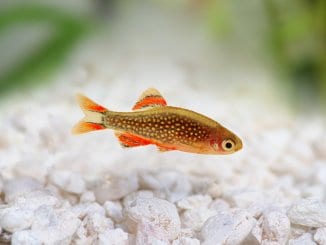
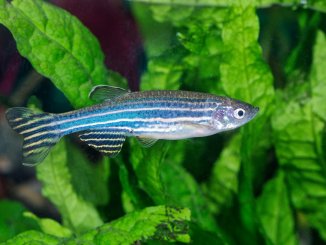
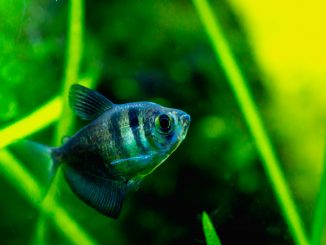
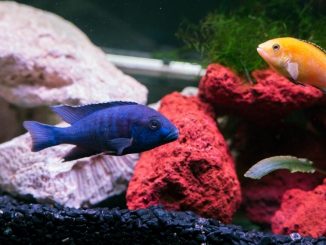
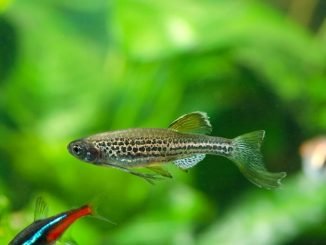
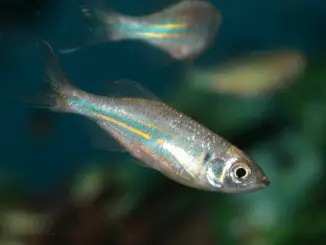
I just started a danio aquarium with 12 danio’s (6 zebra & 6 leaped)
in a 75 gal aquarium & looking at getting 12 more of the same in a few
wks, I don’t have the aquarium completely full just yet, it’s about 1/2
till I can get the other 12 then filling it up, what would be a good
filter to have for this aquarium that will keep the fish & aquarium safe ?